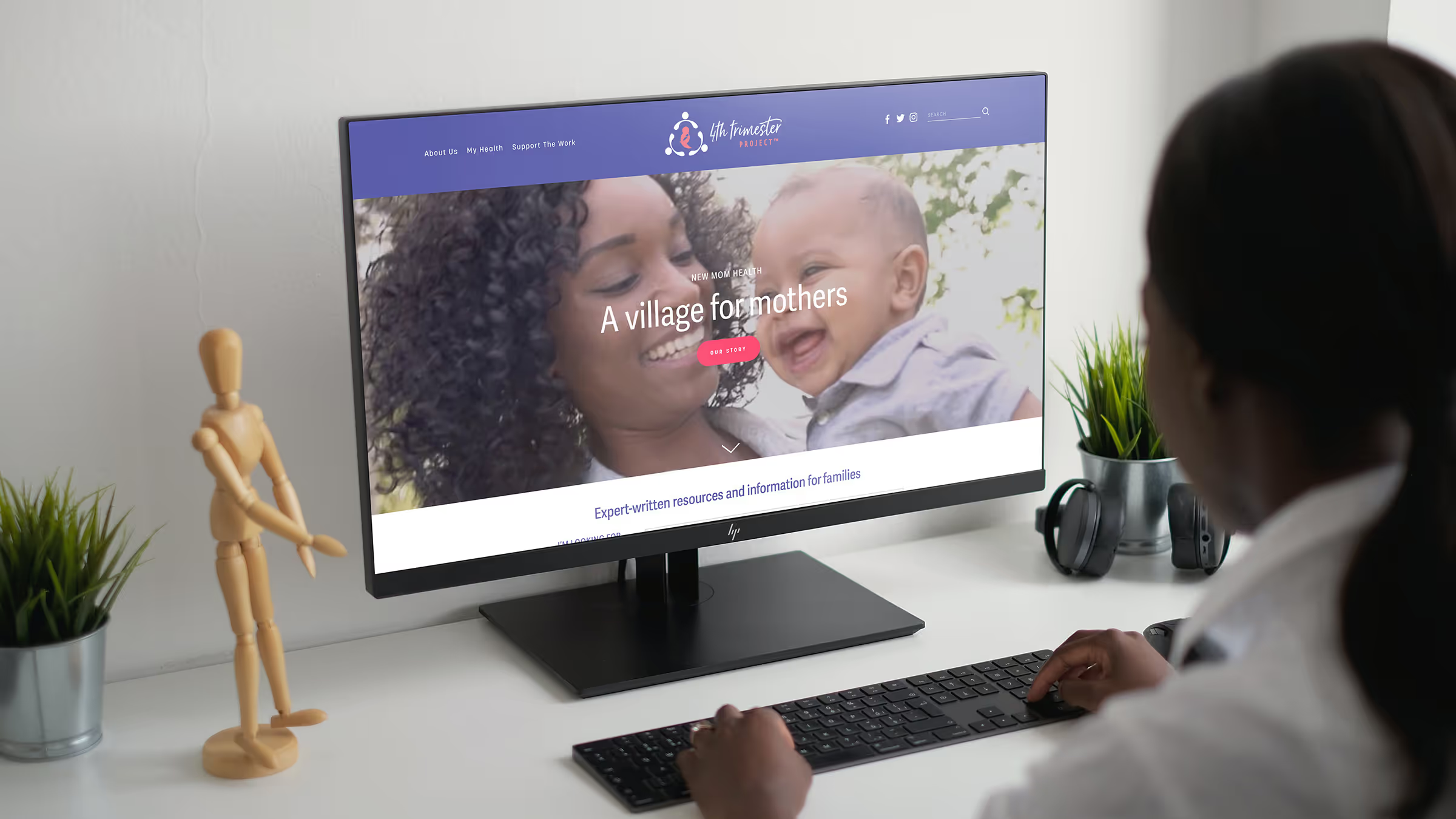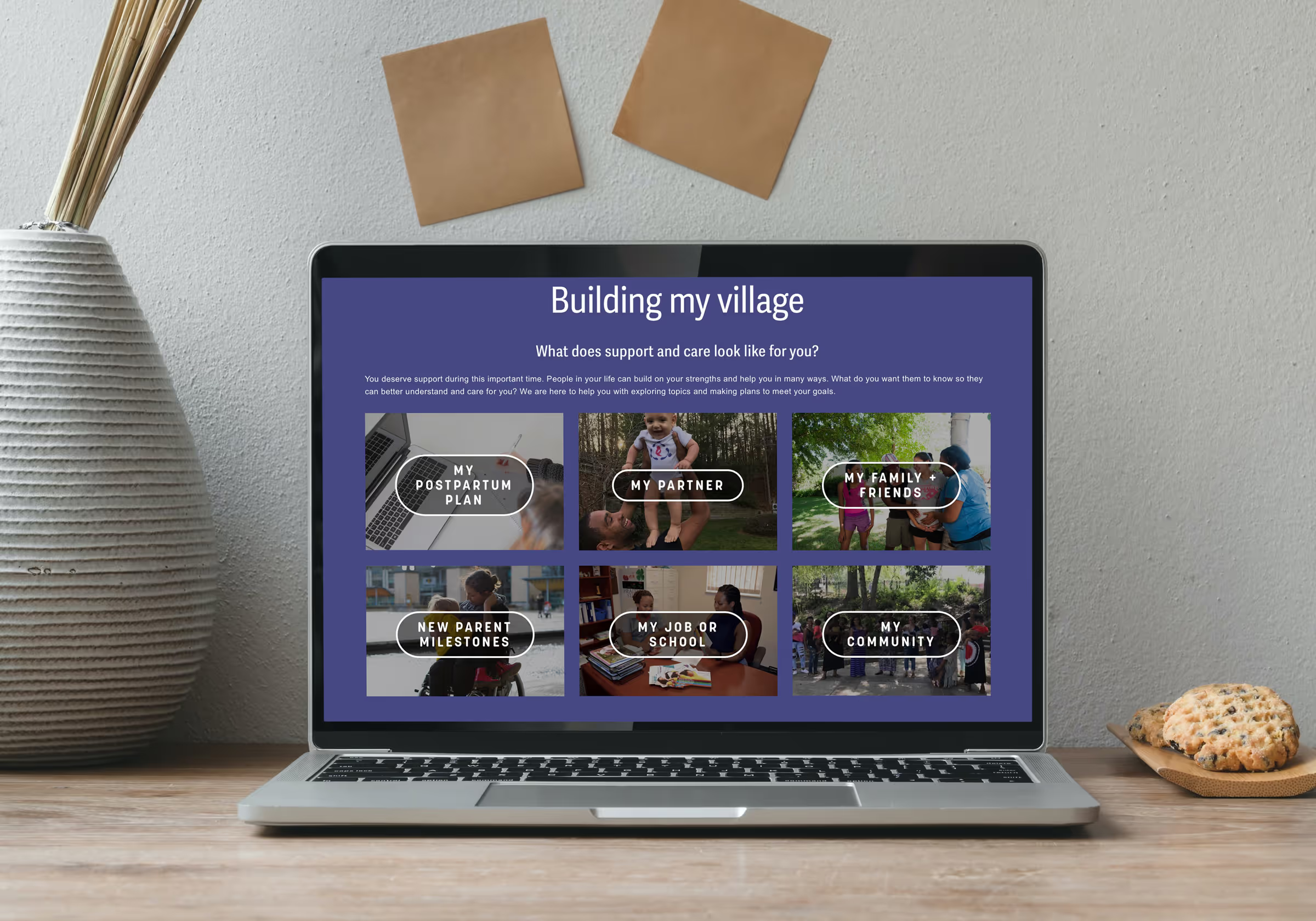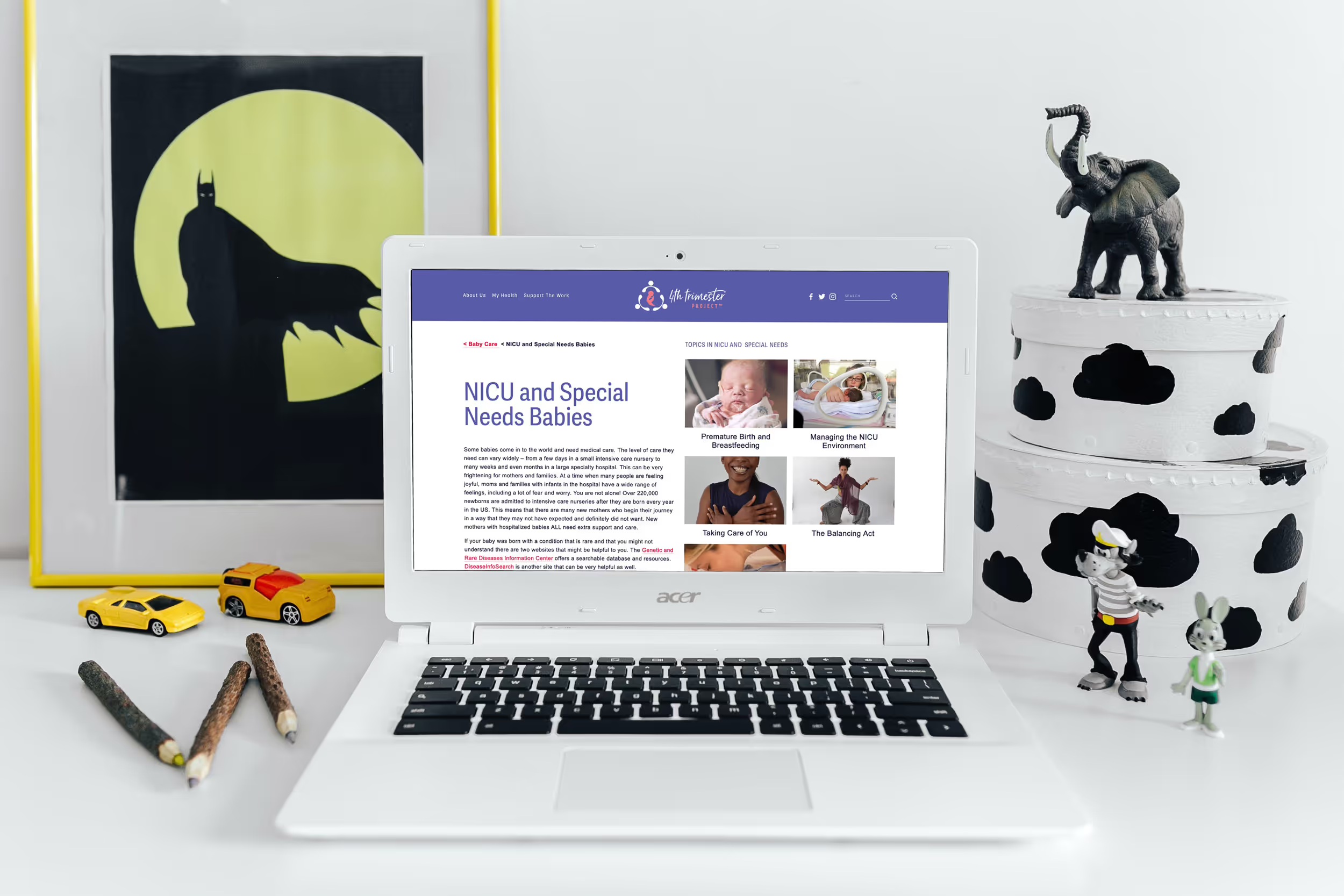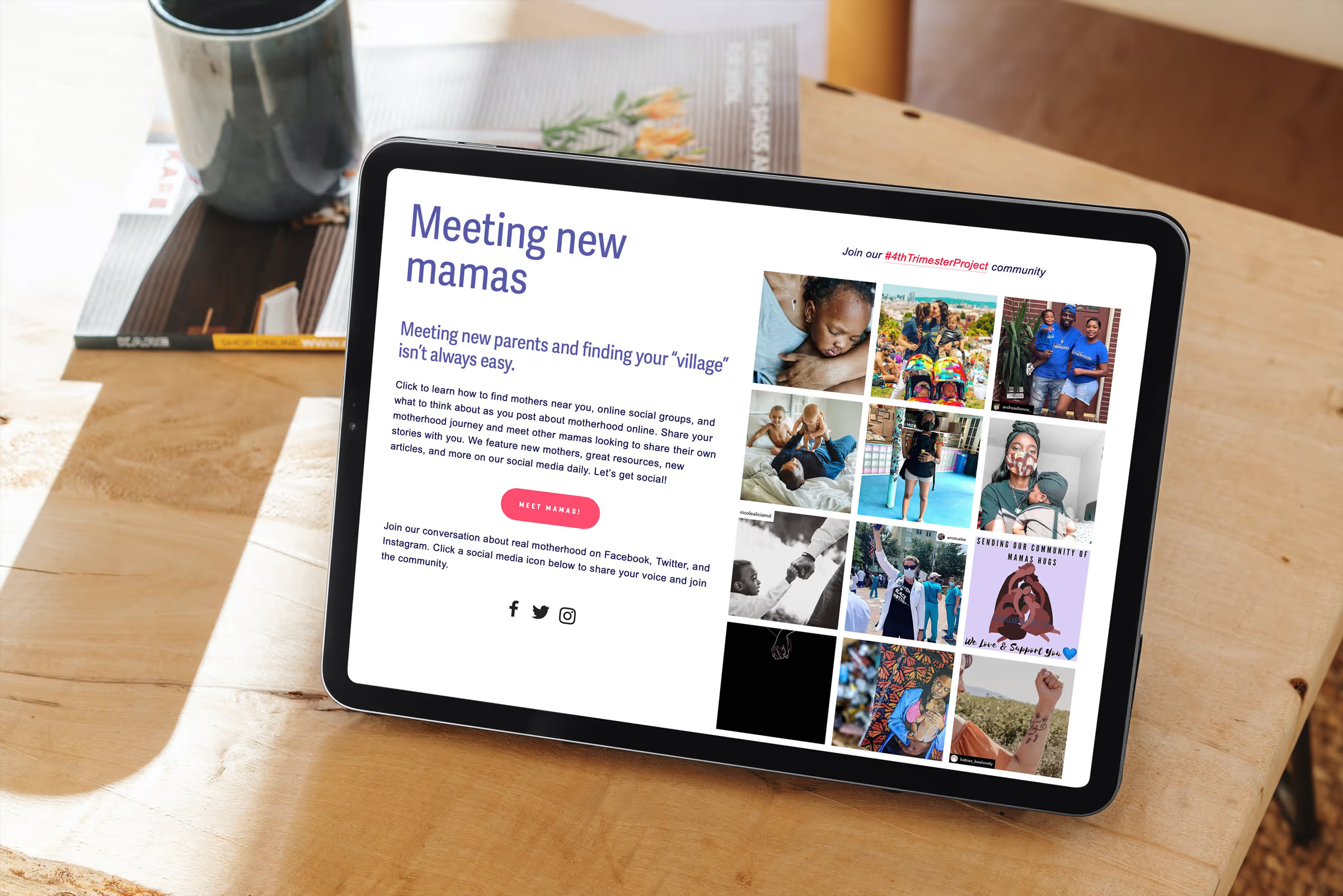A village for mothers
The 4th Trimester Project is composed of a team of maternal health care experts of various specialties, led by Dr. Verbiest, and spanning dozens of years of experience in the field. The goal of The 4th Trimester Project resource hub is to provide free, high-quality, easy-to-use, easy-to-understand, and easy-to-access information for new mothers that demystifies postpartum recovery and advances wellness. Dr. Verbiest stressed the importance of creating a website that would be visually and tonally optimized for families of the most underserved communities; and thus, we fully embrace a human centered design process in designing the postpartum resource hub.

The CMIH discovered significant gaps in maternal health resources for women, especially for those in underserved communities
Prior to approaching Trig for aid in designing a comprehensive research hub for new mothers and their families, the University of North Carolina at Chapel Hill Center for Maternal and Infant Health (CMIH) had completed a two-year project funded by Patient-Centered Outcomes Research Institute (PCORI). This project brought together mothers, healthcare providers, community members and other stakeholders to determine what women need most during their “4th Trimester”—the several months after a child’s birth where mothers rely on accurate information, resources, and help from other family members and their communities.
The primary investigators of the CMIH, Drs. Sarah Verbiest, Alison Stuebe, and Kristin Tully, are at the forefront of the field of maternal health care and lead or participate in national initiatives that help bring more comprehensive and effective postpartum health care, innovation, and resources to new families. The CMIH discovered significant gaps in maternal health resources for women, especially for those in underserved communities, and found that the touch points between health care providers, family members, and community members were highly suboptimal. With a human-centered design process of their own, the CMIH’s research found many opportunities for improvement in the postpartum health care space; in particular, women clearly expressed a need for an accurate resource hub. Thus the CMIH founded the “4th Trimester Project” to develop the much needed resource hub to cover a number of postpartum health care topics.
Human-centered design: What it means for mothers and their families
Human-centered design (HCD) is a creative problem solving methodology that we use at Trig to tease out the most important issues end-users face, gathered specifically from the users’ unique perspectives. In this case, HCD is powered by having deep empathy for mothers and their families as they face the challenges of bringing a newborn home at the beginning of their 4th Trimester. The HCD process helps ensure that the right problems are being addressed for the right people.
In fully embracing the HCD philosophy with the 4th Trimester team, we focused on listening to every mother, family member, and stakeholder’s description of their own experiences, wants, and needs. A successful HCD process not only creates a solution that is adopted and embraced by the end user, but also brings them delight.
Culturally, our society has given so much attention to newborns that oftentimes it is easy forget that a mother, too, was just born. Bringing a baby home is a big transition; one that often leaves many mothers and families with a lot of questions and not many accurate resources in which they may find reliable answers.
The 4th Trimester Project, or NewMomHealth.com, addresses the most frequently asked questions by providing the latest evidence-based articles written by experts of authority in the field, so that mothers and their families can feel confident in the information they’ve found. The 4th Trimester project also aims to connect mothers more closely with their own communities and provides resources for mothers to build a “village” of their own.
Explore

Prototype

Build

With support from funders we will use a human centered design approach to create and launch the Fourth Trimester & Beyond website hub – offering comprehensive, shareable postpartum health and wellness information for women, families and clinicians on a common platform. This will be a cutting-edge design that is part of a new movement to create shared language and learning across patient/provider groups. We envision a site tailored to the diverse populations within the US audience, with the concerns and needs of marginalized groups at the center of this support.
Implementation: Designing a scalable framework for tons of content & working to make the most out of available grant funds
Dr. Verbiest and the maternal health experts at The 4th Trimester, along with consistent feedback directly from mothers worked hard to produce a large collection of evidence-based articles relating to postpartum care and wellness.
Our consultative approach to UX/UI design allowed the 4th Trimester team to directly add content on their own after flexible frameworks were built for use, allowing the 4th Trimester team to leverage the most of their own resources before calling Trig in for more strategic initiatives.













